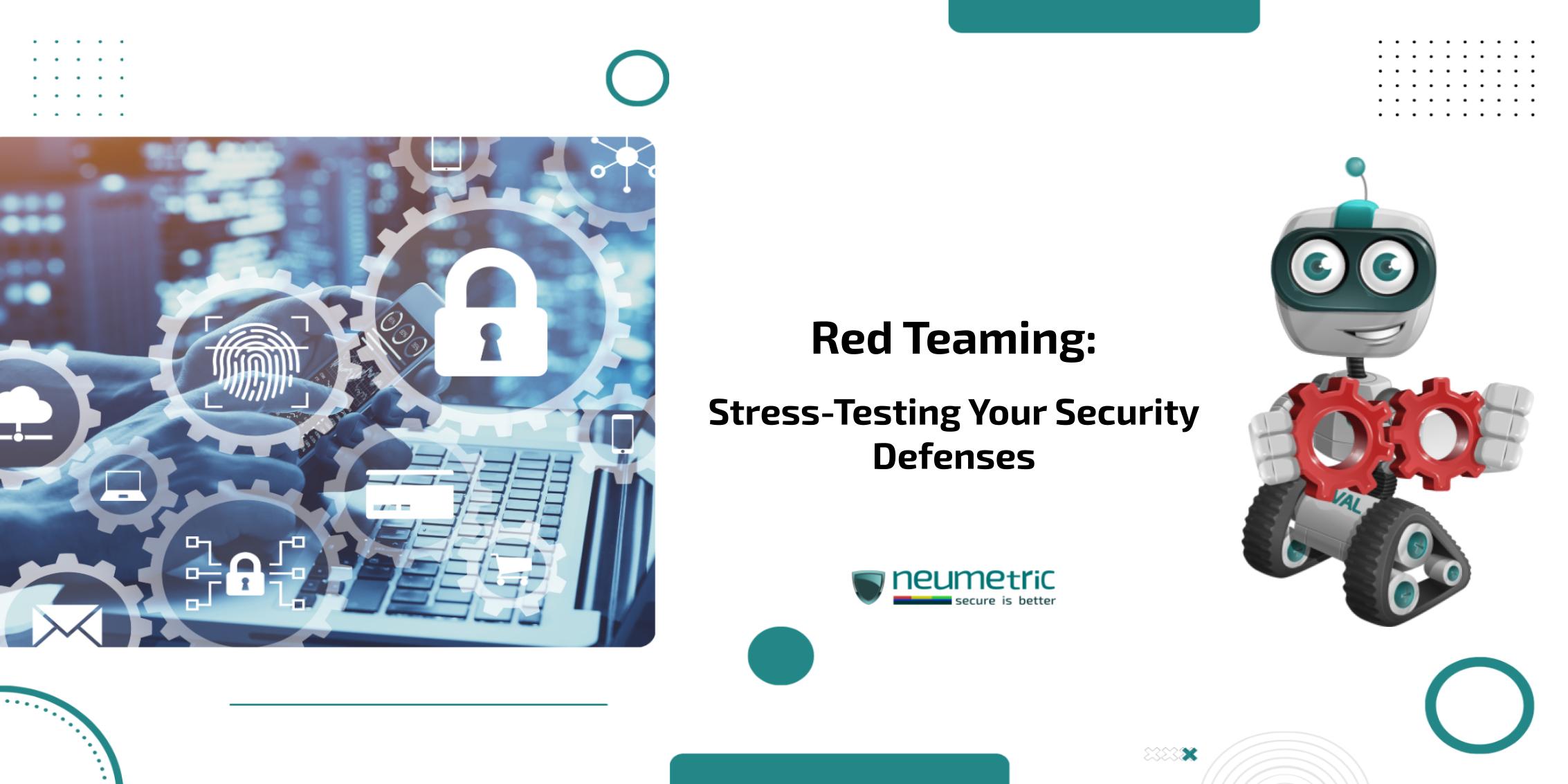Table of Contents
ToggleUnveiling the Power of Red Teaming in Cybersecurity
In today’s digital landscape, where cyber threats loom around every corner, organizations are constantly seeking ways to fortify their defenses. Red teaming is a powerful, proactive approach to cybersecurity that’s revolutionizing how businesses identify & address vulnerabilities. This comprehensive journal will delve into the world of red teaming, exploring its methodologies, benefits & crucial role in maintaining robust security postures.
What is Red Teaming?
Red teaming is an advanced security assessment technique that simulates real-world cyber attacks to evaluate an organization’s ability to detect, prevent & respond to sophisticated threats. Unlike traditional security audits or penetration testing, red teaming takes a holistic approach, challenging not just technical defenses but also human factors & organizational processes.
The term “red team” originates from military exercises, where a group (the red team) would play the role of adversaries to test the effectiveness of defensive strategies. In cybersecurity, red teams emulate the tactics, Techniques & Procedures [TTPs] of actual threat actors, providing invaluable insights into an organization’s security weaknesses.
The Evolution of Red Teaming
The concept of red teaming has evolved significantly over the years. Initially used primarily in military & government settings, it has now become an essential practice in the corporate world, especially for organizations handling sensitive data or critical infrastructure.
In the early days of cybersecurity, most organizations relied on compliance-driven security measures & periodic vulnerability scans. However, as cyber threats became more sophisticated, it became clear that these methods were insufficient to protect against Advanced Persistent Threats [APTs] & targeted attacks.
Red teaming emerged as a response to this growing need for more comprehensive security assessments. By simulating the mindset & methods of real attackers, red teams can identify vulnerabilities that might be missed by automated tools or traditional security audits.
The Red Teaming Process: A Step-by-Step Breakdown
- Planning & Scoping
Every successful red teaming engagement begins with meticulous planning. This phase involves:
- Defining objectives & scope
- Identifying target systems & assets
- Establishing rules of engagement
- Determining the duration of the exercise
During this stage, it’s crucial to involve key stakeholders from various departments within the organization. This ensures that the red team exercise aligns with business objectives & takes into account any specific concerns or priorities.
The planning phase also includes defining the the most critical assets that, if compromised, would cause the most significant damage to the organization. These assets become primary targets for the red team, mirroring the focus of real-world attackers.
- Intelligence Gathering
Red teamers collect information about the target organization, much like real attackers would. This may include:
- Open-Source Intelligence [OSINT]: OSINT involves gathering publicly available information from sources such as social media, company websites & public records. This can reveal valuable details about an organization’s structure, employees & technology stack.
- Social engineering reconnaissance: Social engineering reconnaissance might involve phone calls, emails or even in-person visits to gather information from unsuspecting employees. This phase tests the human element of security, often revealing surprising vulnerabilities in even the most technically secure organizations.
- Network & infrastructure mapping: Network & infrastructure mapping utilizes various tools & techniques to understand the organization’s digital footprint. This includes identifying IP ranges, domain names, cloud assets & potential entry points into the network.
- Vulnerability Analysis
Using the gathered intelligence, the red team identifies potential weaknesses in:
- Technical infrastructure
- Human factors (example: susceptibility to social engineering)
- Organizational processes & policies
This phase often involves a combination of automated scanning tools & manual analysis. Vulnerability scanners can quickly identify known weaknesses in software & configurations, while manual analysis allows for the discovery of more subtle or context-specific vulnerabilities.
The red team also assesses the organization’s security policies & procedures during this phase. They look for gaps in security awareness training, incident response plans & access control policies that could be exploited by attackers.
- Exploitation & Attack Simulation
This is where the red team attempts to breach the organization’s defenses using a variety of techniques, such as:
- Phishing campaigns: Phishing campaigns test employees’ ability to recognize & report suspicious emails. These campaigns often use sophisticated social engineering tactics to increase their effectiveness.
- Malware deployment: Malware deployment might involve creating custom malware that can evade detection by antivirus software. This tests the organization’s ability to detect & respond to novel threats.
- Lateral movement within networks: Lateral movement simulates how an attacker might navigate through a network after gaining initial access. This phase often reveals issues with network segmentation & access controls.
- Data exfiltration attempts: Data exfiltration attempts test the organization’s ability to detect & prevent the unauthorized transfer of sensitive information. This might involve encrypting data, using covert channels or exploiting trusted connections to extract data undetected.
- Reporting & Recommendations
After the exercise, the red team provides a comprehensive report detailing:
- Successful & unsuccessful attack vectors
- Vulnerabilities discovered
- Potential impact of exploited weaknesses
- Actionable recommendations for improvement
The report typically includes a detailed timeline of the red team’s activities, highlighting key decision points & pivotal moments in the exercise. This helps the organization understand how an attack might unfold in real-time & where their current defenses succeeded or failed.
Recommendations are prioritized based on the severity of the vulnerabilities & the potential impact on the organization. These might include technical fixes, policy changes or improvements to security awareness training programs.
Red Teaming vs. Blue Teaming: Understanding the Dynamics
While red teams focus on simulating attacks, blue teams represent the defensive side of an organization’s security operations. The interplay between red & blue teams creates a dynamic environment for improving overall security:
Red Teams: Continuously evolve attack techniques to challenge defenses
Blue Teams: Develop & implement strategies to detect, prevent & respond to threats
Many organizations also employ purple teaming, where red & blue teams collaborate closely to share insights & improve both offensive & defensive capabilities.
The Role of Blue Teams
Blue teams are responsible for maintaining & defending an organization’s security infrastructure. Their responsibilities typically include:
- Monitoring security systems & logs for signs of intrusion
- Implementing & maintaining security controls
- Responding to & investigating security incidents
- Conducting regular vulnerability assessments & patching
Blue teams benefit from red team exercises by gaining practical experience in detecting & responding to sophisticated attacks. This experience helps them refine their detection capabilities & incident response procedures.
Purple Teaming: Bridging the Gap
Purple teaming represents a collaborative approach where red & blue teams work together more closely. This methodology aims to maximize the benefits of both offensive & defensive security practices. In a purple team exercise:
- Red team members share their techniques & findings in real-time with the blue team
- Blue team members provide immediate feedback on the effectiveness of their detection & response capabilities
- Both teams collaboratively develop & test new security controls & processes
This approach accelerates the learning process & helps organizations develop more robust, well-rounded security strategies.
Challenges in Red Teaming: Navigating the Complexities
Despite its benefits, red teaming comes with its own set of challenges:
- Resource Intensity: Red teaming requires significant time, expertise & financial investment. Assembling a skilled red team or engaging external specialists can be costly.
- Potential for Disruption: Simulated attacks may inadvertently impact production systems or operations. Careful planning & coordination are necessary to minimize this risk.
- Scope Limitations: Legal & ethical constraints may limit the extent of red team activities. For example, certain types of social engineering tests may be off-limits due to privacy concerns or regulatory requirements.
- Skill Gap: Finding experienced red teamers with diverse skill sets can be challenging. The best red team members need a combination of technical expertise, creativity & strong communication skills.
- Overconfidence Risk: Successful defense against a red team doesn’t guarantee invulnerability to all real-world threats. Organizations must be cautious not to develop a false sense of security based on the results of a single exercise.
Best Practices for Effective Red Teaming
To maximize the value of red teaming exercises, consider the following best practices:
- Clear Objectives: Define specific, measurable goals for each red team engagement. These objectives should align with the organization’s overall security strategy & risk management priorities.
- Realistic Scenarios: Design attack scenarios that reflect current threat landscapes & are relevant to your organization. This might involve researching industry-specific threats or emulating the TTPs of known threat actors targeting your sector.
- Continuous Improvement: Treat red teaming as an ongoing process, not a one-time event. Regular exercises allow for continuous refinement of both offensive & defensive capabilities.
- Cross-Functional Involvement: Include representatives from various departments in planning & debriefing sessions. This ensures that the exercise considers diverse perspectives & that lessons learned are disseminated throughout the organization.
- Ethical Considerations: Establish clear ethical guidelines & obtain necessary approvals before conducting tests. This is particularly important for social engineering exercises that might involve manipulating employees.
- Learning Integration: Ensure lessons learned from red team exercises are incorporated into security strategies & training programs. This might involve updating security policies, modifying training materials or investing in new security technologies.
- Detailed Documentation: Maintain thorough records of all red team activities, findings & recommendations. This documentation is crucial for tracking improvements over time & demonstrating the value of the program to stakeholders.
- Graduated Complexity: Start with simpler scenarios & gradually increase the complexity & scope of red team exercises as the organization’s capabilities mature. This approach helps build confidence & prevents overwhelming defenders.
- External Perspective: Consider engaging external red teams periodically to bring fresh perspectives & challenge any assumptions that might have developed internally.
- Feedback Loop: Establish a robust feedback mechanism between red & blue teams. Regular debriefing sessions & ongoing communication help both teams improve their skills & strategies.
The Future of Red Teaming: Emerging Trends & Technologies
As cyber threats continue to evolve, so too does the practice of red teaming. Several trends are shaping the future of this critical security discipline:
- AI-Powered Red Teams: Artificial Intelligence [AI] & Machine Learning [ML] are being integrated into red teaming tools, enabling more sophisticated & adaptive attack simulations. AI can help red teams automate certain aspects of their work, allowing them to cover more ground & identify complex patterns of vulnerability.
- Cloud-Focused Assessments: With the increasing adoption of cloud services, red teams are developing specialized techniques to evaluate cloud security postures. This includes testing for misconfigurations in cloud environments, assessing identity & access management controls & simulating attacks on cloud-native applications.
- IoT & OT Red Teaming: As Internet of Things [IoT] devices & Operational Technology [OT] systems become more prevalent, red teams are expanding their focus to include these areas. This requires specialized knowledge of industrial control systems, embedded devices & the unique security challenges they present.
- Automated Red Teaming: While human expertise remains crucial, automated red teaming tools are emerging to complement manual efforts & increase the frequency of assessments. These tools can continuously probe for vulnerabilities & simulate basic attack scenarios, allowing human red teamers to focus on more complex & creative attacks.
- Red Teaming as a Service [RTaaS]: More organizations are turning to specialized providers for on-demand red teaming capabilities. This model allows companies to access expert red team skills without maintaining a full-time in-house team.
- Threat Intelligence Integration: Red teams are increasingly incorporating real-time threat intelligence into their exercises. This allows them to simulate the most current & relevant threats facing the organization.
- Virtual Reality [VR] & Augmented Reality [AR]: Some organizations are experimenting with VR & AR technologies to create immersive red team training environments. These technologies can simulate physical security scenarios & provide a safe space for practicing incident response.
- Quantum Computing Considerations: As quantum computing technology advances, red teams will need to consider its potential impact on cryptography & develop new strategies for testing quantum-resistant security measures.
- Regulatory Compliance: With the increasing focus on cybersecurity regulations, red teaming is likely to become a more formal requirement in certain industries. This may lead to standardized frameworks & methodologies for conducting & reporting on red team exercises.
- Cross-Industry Collaboration: There’s a growing trend towards sharing red team insights across industries. This collaborative approach helps organizations stay ahead of emerging threats & learn from each other’s experiences.
Frequently Asked Questions [FAQ]
How often should organizations conduct red team exercises?
The frequency of red team exercises depends on various factors, including the organization’s size, industry & risk profile. However, many experts recommend conducting comprehensive red team assessments at least annually, with more frequent, focused exercises throughout the year. High-risk industries or organizations handling sensitive data may benefit from even more frequent assessments.
Can small businesses benefit from red teaming?
While red teaming is often associated with large enterprises, small businesses can also benefit from scaled-down versions of these exercises. Small-scale red team assessments can help identify critical vulnerabilities & improve overall security awareness. For small businesses, this might involve: focused assessments on critical systems or processes, simplified social engineering tests & collaborative exercises with IT service providers. The key is to tailor the scope & complexity of the red team exercise to the organization’s size & resources.





